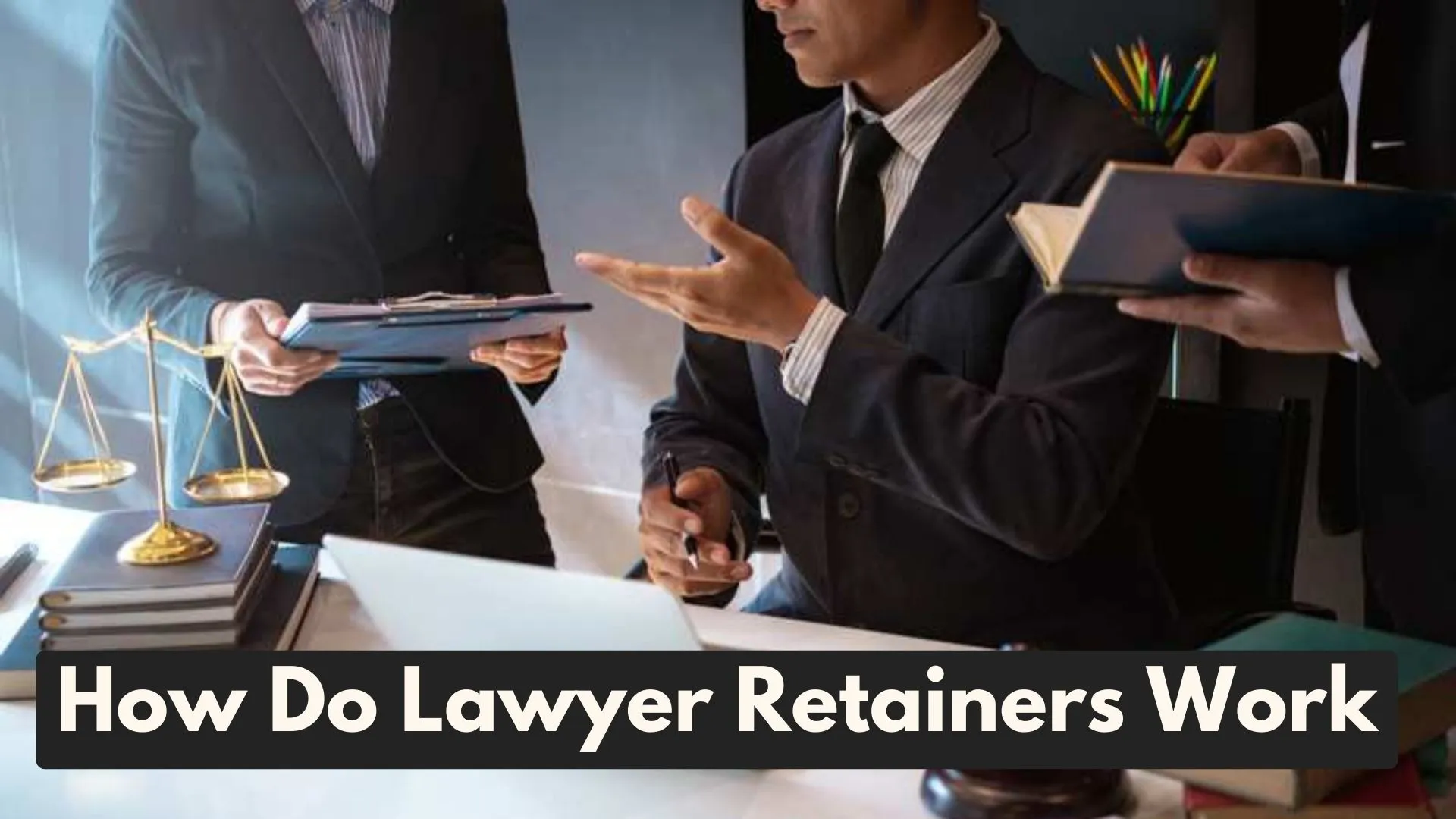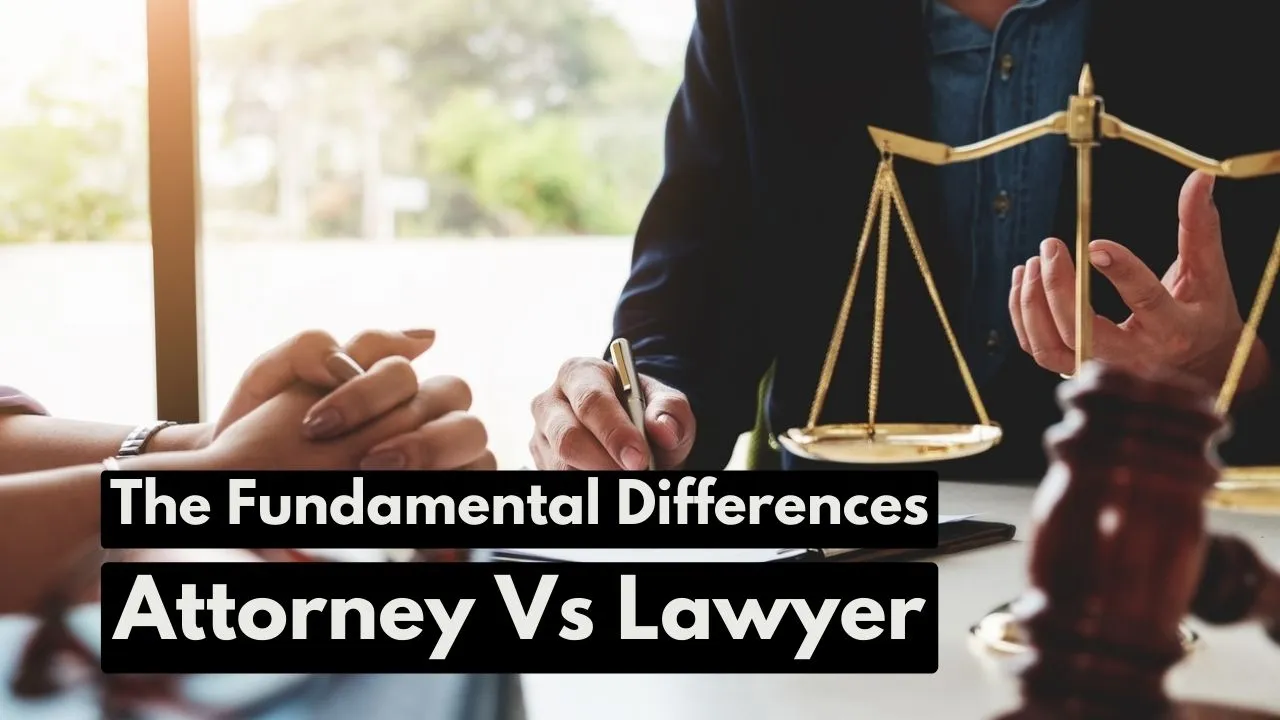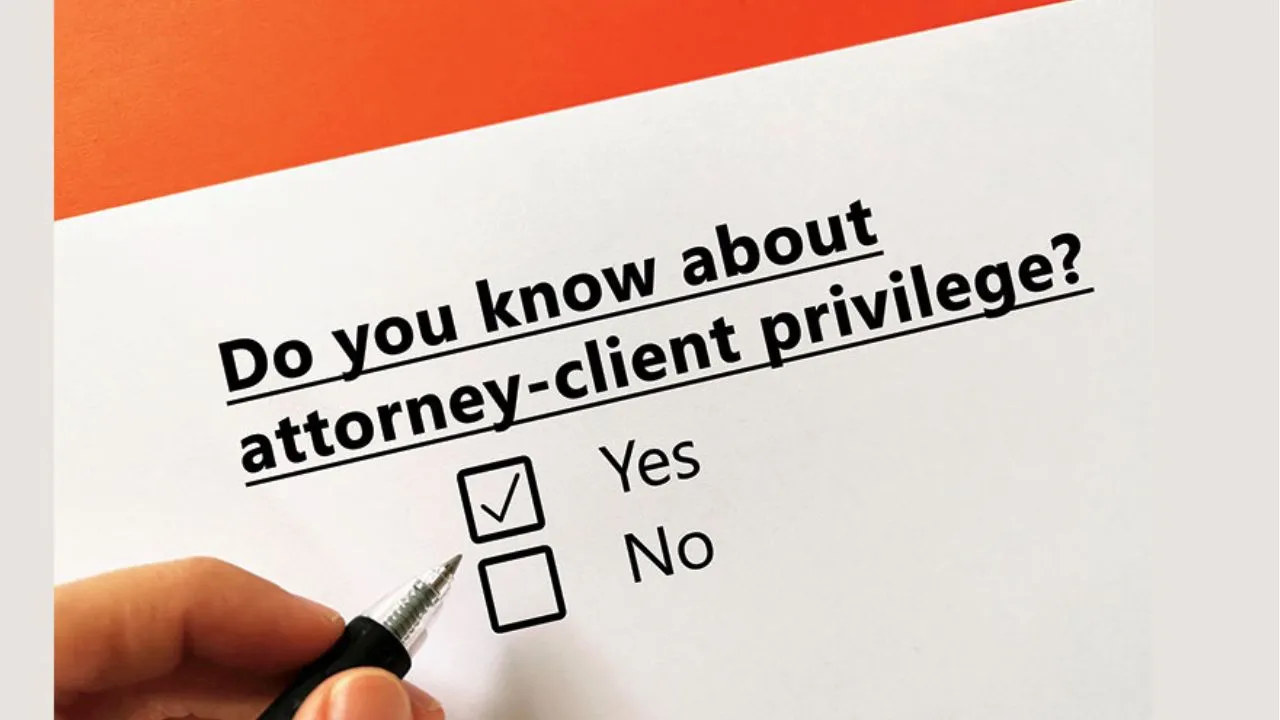A lawyer retainer is an agreement between a lawyer and a client that establishes the terms of their professional relationship and the scope of legal services to be provided.
A lawyer retainer is a upfront fee paid by a client to secure legal services. It’s typically held in a trust account and used as the lawyer’s hourly fees are incurred. Once depleted, the client may need to replenish the retainer. Unused funds are usually refunded at the case’s conclusion.
When you understand how do lawyer retainers work, it’s become easy for you to cooperate and avoid mistakes. This is extremely helpful in knowing – what steps you need to take at what moment.
So, in this article about “how do lawyer retainers work“- I’ve personally done the research and ultimately decided to break it into steps so that you can understand each step, your role, lawyer roles, and responsibilities during the entire process.
Here are the steps that I’m going to discuss in detail –
- STEP 1# Initial Consultation
- STEP 2# Signing the Retainer Agreement:
- STEP 3# Funding the Retainer
- STEP 4# Hourly Billing
- STEP 5# Scope of Work
- STEP 6# Out-Of-Pocket Expenses
- STEP 7# Replenishing the Retainer (if applicable)
- STEP 8# Case Resolution and Remaining Funds
- STEP 9# Termination
If you go through this guide once and take the necessary notes, then I can assure you you don’t have to learn more to work with any lawyer retainers.
But for that, you need to stick to each step one by one without skipping.
Let’s Imagine You Are Facing a Legal Scenario
I want you to imagine that you’re facing a legal issue and need a lawyer’s help.
That’s where a lawyer retainer comes in. Think of it as a sort of “legal insurance policy” that ensures you have access to a lawyer’s expertise when you need it most.
So, here’s how it typically rolls out: First off, you and the lawyer sit down and hash out the details of your legal needs and what services the lawyer will provide.
This is where you both agree on the scope of work and the fee structure.
Then comes the money talk. You pay an upfront fee called a retainer fee, kind of like a down payment. This secures the lawyer’s services and covers their initial work.
The lawyer will bill you for their time spent on your case, usually at an hourly rate, and they’ll deduct those charges from the retainer.
As the case progresses, you might need to top up the retainer if it runs low. This ensures the lawyer keeps working on your behalf without any interruptions.
Throughout the process, the retainer agreement outlines everything, from how often you’ll chat with your lawyer to who foots the bill for expenses like court fees or expert opinions.
And hey, if things don’t work out or you no longer need the lawyer’s services, there are usually provisions in the agreement for wrapping things up smoothly.
So, in a nutshell, a lawyer retainer is like having a legal buddy on standby, ready to tackle your legal troubles with you every step of the way.
how it typically works-
How Do Lawyer Retainers Work Step By Step?

Step-by-step breakdown of how lawyer retainers work:
STEP 1️⃣# Initial Consultation
You meet with a lawyer to discuss your legal situation.
The lawyer will explain their fee structure, which might involve hourly rates, flat fees, or a retainer agreement.
If you decide to move forward with a retainer, you’ll discuss the type of retainer that best suits your case (general, special, or security).
STEP 2️⃣# Signing the Retainer Agreement:
The lawyer and the client agree to the terms of the retainer agreement, which outlines the services to be provided, the fee structure, and other relevant terms.
The retainer agreement is a legal document outlining the terms of your agreement with the lawyer.
It will specify:
- The type of retainer (general, special, or security)
- The amount of the retainer fee
- How the retainer will be used (hourly billing rate, specific service covered)
- What happens to any unused funds
- The lawyer’s hourly rate (if applicable)
- Your obligations to replenish the retainer if needed
STEP 3️⃣# Funding the Retainer
The client pays an upfront fee, known as a retainer fee, to secure the lawyer’s services.
This fee is typically based on the expected amount of work involved in the case and serves as a guarantee of payment for the lawyer’s services.
You pay the initial retainer fee to the lawyer’s trust account.
This trust account is separate from the lawyer’s operating account, ensuring your money is held securely.
Funding the retainer involves paying an upfront fee to secure the lawyer’s services, with the money typically deposited into a trust account to ensure its security and proper use.
This initial payment serves as a guarantee of payment for the lawyer’s services and helps initiate the legal representation process.
✅ Initial Payment: As part of hiring a lawyer, you’ll be required to pay an upfront fee, often referred to as a retainer fee. This fee is essentially a down payment to secure the lawyer’s services for your case.
✅ Basis of Fee: The amount of the retainer fee is typically determined based on the expected amount of work involved in your case.
Factors such as the complexity of the legal matter, the time it’s expected to take, and the lawyer’s hourly rate may all influence the retainer amount.
✅ Guarantee of Payment: By paying the retainer fee, you’re essentially providing a guarantee of payment for the lawyer’s services. This upfront payment ensures that the lawyer is compensated for their time and effort, regardless of the outcome of your case.
✅ Payment to Trust Account: When you pay the retainer fee, the money is typically deposited into the lawyer’s trust account. This account is separate from the lawyer’s operating account and is specifically designated to hold client funds.
By depositing the retainer fee into a trust account, your money is held securely and separately from the lawyer’s personal or business finances.
✅ Protection for Clients: Depositing the retainer fee into a trust account provides added protection for clients.
It ensures that your funds are held safely and are only used to cover legal fees and expenses related to your case. This helps prevent any potential misuse or mishandling of client funds.
STEP 4️⃣# Hourly Billing:
The lawyer then bills the client for the time spent working on the case at an agreed-upon hourly rate. The retainer fee may be used to cover these hourly charges, with the client replenishing the retainer as needed.
When your lawyer uses a retainer agreement with hourly billing, they meticulously track the time they spend working on your case.
This includes activities like:
✔️ Reviewing documents and emails
✔️ Conducting legal research
✔️ Drafting legal documents (contracts, motions, etc.)
✔️ Preparing for and attending meetings (court appearances, client consultations)
✔️ Phone calls with you or other parties involved
Each activity is typically assigned a specific time block (e.g., 6 minutes, 15 minutes, etc.).
The lawyer will have a system for recording these time blocks, such as using legal practice management software or keeping detailed time logs.
✅ Hourly Rate: The lawyer’s hourly rate is multiplied by the total time spent on your case to determine the amount deducted from your retainer.
✅ Periodic Statements: You’ll usually receive regular statements (often monthly) from the lawyer detailing the work performed, the time spent, and the corresponding charges deducted from your retainer.
This allows you to monitor your retainer balance and track legal costs.
Here’s an example of how hourly billing with a retainer might work:
- You enter into a retainer agreement with a lawyer who charges $200 per hour.
- You pay a $3,000 retainer fee.
- The lawyer spends 5 hours reviewing documents and emails for your case in the first month.
- The hourly charges for this work would be: 5 hours * $200/hour = $1,000
- This amount is deducted from your retainer, leaving a remaining balance of $3,000 – $1,000 = $2,000
STEP 5️⃣# Scope of Work
The retainer agreement specifies the scope of work that the lawyer will undertake on behalf of the client. This may include
- Legal Research
- Drafting Documents
- Representing The Client In Court
- Providing Legal Advice
The scope of work outlined in a retainer agreement can vary depending on the specifics of the legal matter and the needs of the client.
Here’s a breakdown of what each component of the scope of work might entail:
✅ Legal Research: This involves digging into relevant laws, regulations, and precedents to understand how they apply to your case.
The lawyer may need to research court decisions, statutes, and legal opinions to build a strong argument on your behalf.
✅ Drafting Documents: Lawyers often prepare various legal documents, such as contracts, agreements, pleadings, motions, and legal correspondence.
These documents need to be meticulously drafted to accurately reflect your legal position and protect your rights.
✅ Representation in Court: If your case goes to court, the lawyer will represent you in legal proceedings.
This can include attending hearings, presenting arguments, examining witnesses, and advocating for your interests before a judge or jury.
✅ Negotiations: Many legal matters are resolved through negotiation rather than litigation.
Your lawyer may engage in negotiations with opposing parties, such as insurance companies or opposing counsel, to reach a favorable settlement agreement.
✅ Legal Advice: One of the most critical aspects of a lawyer’s role is providing legal advice and guidance to clients.
Your lawyer will analyze the facts of your case, assess your legal options, and provide recommendations on the best course of action to achieve your objectives.
✅ Case Management: Managing a legal case involves a variety of tasks, including scheduling court dates, coordinating with other parties involved in the case, and ensuring that all deadlines are met.
Your lawyer will handle these administrative aspects to keep your case on track.
By outlining the scope of work in the retainer agreement, both you and your lawyer have a clear understanding of what services will be provided and what is expected from each party.
This helps ensure that your legal needs are met effectively and efficiently throughout the course of representation.
STEP 6️⃣# Out-Of-Pocket Expenses
In addition to the lawyer’s fees, the client may be responsible for reimbursing the lawyer for any out-of-pocket expenses incurred during the course of representation, such as court filing fees, expert witness fees, or travel expenses.
It’s important to discuss expenses upfront with your lawyer and ensure that they are clearly outlined in the retainer agreement. This helps avoid misunderstandings and ensures transparency in the financial aspects of your legal representation.
What expenses might be included:
✅ Court Filing Fees: When legal documents need to be filed with the court, there are often associated fees. These fees can vary depending on the type of case and the jurisdiction. Your lawyer will typically pay these fees upfront and then bill you for reimbursement.
✅ Expert Witness Fees: In some cases, expert witnesses may be necessary to provide specialized knowledge or testimony relevant to your case.
This could include medical experts, forensic specialists, or other professionals. Expert witness fees can vary widely depending on the expertise required and the amount of time involved.
✅ Travel Expenses: If your case requires travel, such as attending court hearings in another city or meeting with witnesses or experts in person, you may be responsible for covering the associated expenses. This could include transportation costs, lodging, meals, and other incidentals.
✅ Document Production: Obtaining copies of documents, such as medical records, police reports, or other evidence, may incur fees from third-party providers. Your lawyer may pass these costs on to you as part of the expenses incurred during the representation.
✅ Copying and Printing Costs: Printing and copying documents for use in your case, whether for court filings, evidence packets, or other purposes, can also result in expenses that you may be responsible for reimbursing.
✅ Other Miscellaneous Expenses: Depending on the specifics of your case, there may be other miscellaneous expenses that arise during the course of representation.
These could include postage, courier fees, court reporter fees, or other incidentals necessary to effectively handle your legal matter.
STEP 7️⃣# Replenishing the Retainer (if applicable)
Replenishing the retainer ensures that your lawyer has the necessary funds to continue representing you effectively and that there are no interruptions in the legal process due to financial considerations.
It’s essential to communicate openly with your lawyer about any financial concerns and to address retainer replenishment promptly to avoid any disruptions in your case.
Replenishing the retainer is an important step in the lawyer-client relationship, especially if the initial retainer amount is depleted before the case is resolved.
Here’s how this process typically works:
✅ Monitoring Retainer Balance: Throughout the course of representation, your lawyer will keep track of the retainer balance. They will deduct their fees and expenses from the retainer as they accrue.
✅ Notification: If the retainer balance starts running low, your lawyer will notify you in advance. They’ll inform you of the need to replenish the retainer to ensure they can continue working on your case without interruption.
✅ Replenishment Amount: Your lawyer will provide you with an estimate of how much needs to be added to the retainer to cover future fees and expenses. This amount may vary depending on the progress of the case and any new developments that arise.
✅ Payment: You’ll be responsible for making the replenishment payment to your lawyer. This can typically be done through various methods, such as bank transfer, credit card payment, or a check.
✅ Continued Representation: Once the retainer has been replenished, your lawyer will continue working on your case as before. They’ll use the replenished funds to cover their fees and expenses as they arise.
✅ Transparency: Your lawyer should provide you with an updated retainer statement showing the new balance after the replenishment. This ensures transparency and helps you keep track of the financial aspects of your legal representation.
STEP 8️⃣# Case Resolution and Remaining Funds
By addressing the disposition of remaining funds in a clear and transparent manner, both you and your lawyer can ensure that all financial matters are handled appropriately and in accordance with the terms of the retainer agreement.
how the process typically unfolds when a legal case is resolved and there are remaining funds in the retainer:
✅ Case Resolution: Your legal matter reaches a resolution, either through a settlement agreement, a court judgment, or another form of resolution. This marks the end of the active phase of the legal representation.
✅ Final Billing: After the case is resolved, your lawyer will prepare a final billing statement detailing all the fees incurred, expenses paid, and services provided throughout the course of representation. This statement will reflect the total amount of legal fees and expenses accrued.
✅ Remaining Funds: If there are funds remaining in the retainer after all fees and expenses have been deducted, your lawyer will calculate the surplus amount. This surplus represents the portion of the retainer that was not used during the course of representation.
✅ Refund or Disposition: Depending on the terms outlined in the retainer agreement and applicable laws, there are several potential outcomes for the remaining funds:
✅ Refund: If the retainer agreement specifies that any remaining funds will be refunded to the client, your lawyer will issue a refund for the surplus amount. This refund will typically be sent to you via check or electronic transfer.
✅ Future Services: In some cases, the retainer agreement may allow for any remaining funds to be held in trust for future legal services. This could be beneficial if you anticipate needing legal assistance in the future.
✅ Disposition as Directed: Alternatively, the retainer agreement may specify that any remaining funds will be disposed of as directed by the client. This could involve donating the funds to a specified charity or transferring them to another individual or entity.
✅ Documentation: Your lawyer will provide you with documentation, such as a final billing statement and a receipt for any refund issued, to ensure transparency and accountability regarding the disposition of the retainer funds.
✅ Closure: With the resolution of the case and the disposition of any remaining funds, the lawyer-client relationship comes to a close. However, if you require legal assistance in the future, you can always reach out to your lawyer again for further representation.
STEP 9️⃣# Termination
The retainer agreement typically includes provisions for terminating the relationship between the lawyer and the client, including any procedures for withdrawing from representation and resolving disputes over fees.
FAQs Related To “How Do Lawyer Retainers Work”
❓ How does a lawyer retainer differ from other legal fees?
Unlike other legal fees, which are typically charged hourly or on a contingency basis, a retainer is a fixed amount paid in advance. It acts as a down payment for legal services.
❓ Why do lawyers require retainers?
Lawyers often require retainers to ensure they are compensated for their time and to cover initial costs associated with your case, such as research, filing fees, and administrative expenses.
❓ How is the amount of the retainer determined?
The amount of the retainer can vary depending on factors such as the complexity of the case, the attorney’s experience and reputation, and the anticipated amount of work required. It is usually discussed and agreed upon between the attorney and the client before any legal work begins.
❓ Is the retainer refundable?
Whether a retainer is refundable depends on the terms of the agreement between the attorney and the client. In some cases, any unused portion of the retainer may be refunded to the client at the conclusion of the case. However, in other instances, the retainer may be considered non-refundable, serving as payment for the attorney’s availability and commitment.
❓ How is the retainer applied to legal fees?
The retainer is typically deposited into a trust or escrow account and used to pay for legal services as they are rendered. The attorney will bill against the retainer, deducting fees and expenses as they accrue. Once the retainer is depleted, the client may be required to replenish it to continue receiving legal services.
❓ What happens if the retainer runs out?
If the retainer runs out before the case is resolved, the attorney may request an additional retainer or switch to another fee arrangement, such as billing hourly. It’s essential to maintain open communication with your attorney regarding billing and expenses throughout the legal process.
❓ Are there any risks associated with paying a retainer?
While retainers are a common practice in legal representation, there are potential risks, such as the possibility of disputes over billing or dissatisfaction with the attorney’s services. It’s crucial to thoroughly discuss the terms of the retainer agreement and clarify any questions or concerns before entering into the arrangement.
❓ Can I negotiate the terms of the retainer agreement?
Yes, clients can often negotiate the terms of the retainer agreement, including the amount of the retainer, how it will be applied, and whether it is refundable. However, it’s essential to understand that the terms may vary depending on the attorney’s policies and the specific circumstances of your case.
❓ How should I choose a lawyer when considering a retainer?
When selecting a lawyer, it’s essential to consider factors such as their experience, expertise in the relevant area of law, reputation, and fee structure. Additionally, it’s advisable to schedule consultations with multiple attorneys to discuss your case and compare their approaches and retainer terms before making a decision.
❓ How long is a lawyer retainer good for?
A lawyer retainer is typically valid for the duration of the legal representation or until the retainer is fully utilized. However, the specific terms regarding the duration of the retainer may vary depending on the agreement between the attorney and the client.
❓ Is it good to have a lawyer on retainer?
Having a lawyer on retainer can be beneficial for individuals or businesses who anticipate needing ongoing legal advice or representation. It ensures prompt access to legal counsel whenever needed and may provide a sense of security knowing that legal assistance is readily available.
❓ What are the benefits of having a lawyer on retainer?
-Immediate access to legal advice and representation.
-Priority treatment and availability for urgent legal matters.
-Cost-effective, as the retainer may result in discounted rates for services.
-Establishes a long-term relationship with a trusted legal advisor.
-Helps in proactive legal planning and risk management.
❓ What does a lawyer retainer fee cover?
A lawyer retainer fee typically covers the attorney’s availability and commitment to represent the client, initial case assessment, legal research, drafting of documents, communication with the client, and other administrative expenses associated with handling the case.
❓ Is a lawyer retainer fee refundable?
Whether a lawyer retainer fee is refundable depends on the terms outlined in the retainer agreement. In some cases, any unused portion of the retainer may be refundable to the client upon the conclusion of the legal matter. However, in other instances, the retainer may be considered non-refundable, serving as compensation for the attorney’s availability and commitment.
❓ How does a retainer fee work?
A retainer fee is paid upfront to secure the services of a lawyer. It is typically deposited into a trust or escrow account and used to cover legal services as they are rendered. The attorney bills against the retainer, deducting fees and expenses, and may request replenishment of the retainer if it becomes depleted before the case is resolved.
❓ What is a retainer for a lawyer?
A retainer for a lawyer is a prepayment made by a client to secure the attorney’s services for legal matters. It ensures the lawyer’s availability and commitment to represent the client and covers initial expenses associated with the case. The retainer fee establishes a professional relationship between the lawyer and the client, providing access to legal advice and representation as needed.
Conclusion
In conclusion, a lawyer retainer agreement serves as the cornerstone of the lawyer-client relationship, providing a framework for the provision of legal services and the management of financial matters.
The way lawyer retainers work is different from other lawyers.
Through the retainer agreement, both parties establish clear expectations regarding the scope of work, fee structure, and other terms of representation.
Throughout the course of representation, the retainer agreement guides the provision of legal services, ensuring that the lawyer has the necessary resources to advocate effectively on behalf of the client. It outlines procedures for communication, expense reimbursement, retainer replenishment, and termination of the relationship if needed.
At the conclusion of the case, the retainer agreement governs the resolution of any remaining retainer funds, disputes over fees, and the transfer of case files.
By addressing these matters in a transparent and comprehensive manner, the retainer agreement helps to foster trust, accountability, and mutual understanding between the lawyer and the client.
In essence, the retainer agreement serves as a vital tool for facilitating a successful lawyer-client relationship, guiding the provision of legal services, and ensuring that the interests of both parties are protected throughout the legal representation process.
You may like to learn the difference between layers, advocate, esquire, attorney…make sure you check out my previous articles –





Leave a Reply